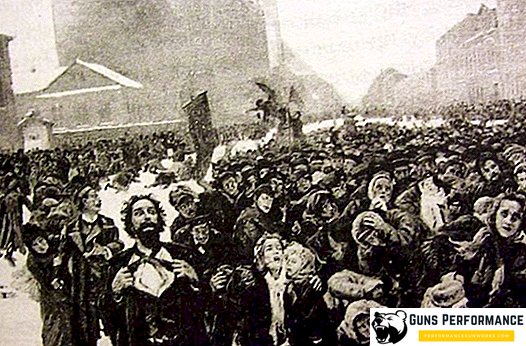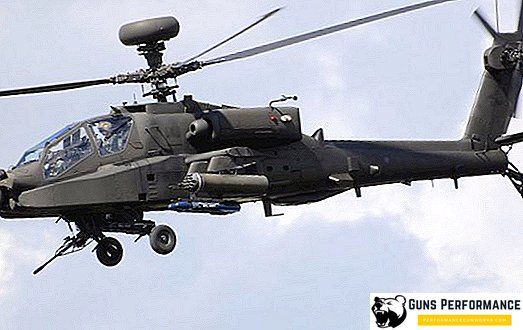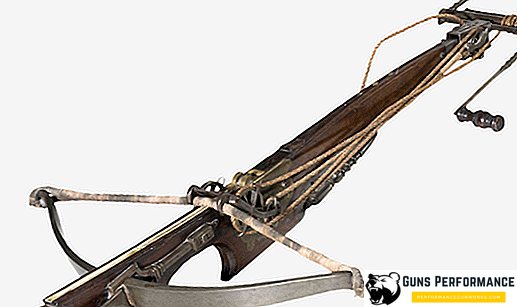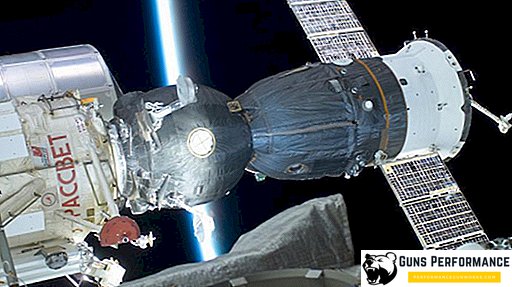After Russia's withdrawal from the First World War, no peace came to the Russian land. The troubled internal political situation could not allow the peace of the long-awaited and desired by the masses. As Lenin predicted, "the imperialist war developed into a civil war, from Brest to Vladivostok."
Background war
The prerequisites of the Civil War in Russia should be sought as far back as the second half of the 19th century, when various revolutionary organizations that had the aim of overthrowing tsarism in Russia became widespread. These organizations in the achievement of their goals did not neglect the loud actions. Thus, the whole of Russia was shocked by a series of attempts on the emperor Alexander II, during which completely strangers died.
However, revolutionary organizations, in addition to the murder of Alexander II and a number of murders of Russian political figures, failed to achieve any serious results. This is largely due to the fact that they did not have adequate support among the masses, and their ideology was incomprehensible to the majority of the population. The bulk of the revolutionaries then came from non-peasant estates.

The revolution of 1905-1907. also failed to fully achieve all their goals. This is partly due to the fact that the tsarist government then still had not so weak positions that it could be overthrown. Also, the revolutionary struggle in Russia had not yet reached its peak. Only 10 years later, the success of the revolution became possible.
During the First World War, the general crisis of capitalism in Russia intensified, and the masses rather quickly became tired of the war, which manifested itself in a serious deterioration in the food situation and in fairly large casualties. It was then that serious prerequisites appeared for the revolution, which happened on February 27, 1917. In the course of it, Tsar Nicholas II was overthrown, and the Provisional Government became power in Russia. At the same time, this government really assumed a transitional role, and the Constituent Assembly was to decide the fate of the country.

However, in a very short time, the Provisional Government was able to turn the masses against itself. Staying true to Russia's allied commitments to the Entente, it did not think to stop the war. At the same time, the government’s ambitions did not correspond at all to the real capabilities of the then Russian army. In June 1917, an attempt was made to attack the Russian army against the Germans, which ended disastrously.
The situation was cleverly used by the Bolshevik forces headed by V. I. Lenin and L. D. Trotsky. The Bolshevik coup, the possibility of which was almost zero a few years ago, became real by the end of 1917. What happened on October 25 (November 7), 1917. Power in the country began to move to the Bolsheviks.
The beginning of the Civil War in Russia (1917-1918)

The period from November 1917 to February 1918 can be called as a stage in the establishment of the power of the Bolsheviks in Russia. And if initially almost everywhere this power passed to the Bolsheviks almost peacefully and bloodlessly, then this often happened as a result of bloody battles, and in some places the power of the Bolsheviks was not at all recognized. So, in Ukraine, the entire power passed to the Central Rada. The Central Rada, relying on the parts of the former Russian South-Western and Romanian fronts that were loyal to it, managed to disarm the troops loyal to the Bolsheviks and to take into custody a number of Bolshevik leaders. These events served as a pretext for the concentration of Soviet troops in the Donbass and Kharkov.
On the Don against the Bolsheviks, an uprising of Cossack detachments began under the leadership of ataman Kaledin and generals Kornilov and Alekseev. As a result, the Bolsheviks were driven out of Rostov-on-Don and forced to retreat to the east of Ukraine. From here, the Red Guard units under the leadership of V. A. Antonov-Ovseenko in December 1917 launched a counter-offensive in order to defeat the "anti-Bolshevik Cossack insurrection." By February 1918, almost the entire area of the Don Cossacks was occupied by the Bolsheviks, and the Cossacks, who were not supported in their anti-Bolshevik struggle by the majority of the local population, retreated to the Salsk steppes.

At the same time, a bloody struggle unfolded in Ukraine. So, in December and January, the central regions of the country were occupied. By the end of January 1918, the red detachments reached Kiev, which was taken on January 26 (February 8). In this critical situation, the Central Rada of the Ukrainian People’s Republic declared Ukraine’s independence and began peace negotiations with the countries of the Central bloc. Soon the peace treaty was signed, and the Central Council appealed to Germany for help against the Soviet occupation. The German leadership decided to enter the war against Soviet Russia, and on February 18, 1918 the offensive began.
In the Transcaucasus, the Transcaucasian Commissariat came to power, immediately taking a hostile attitude towards the Bolsheviks. Soon the new government declared the independence of the Transcaucasian Democratic Federative Republic (ZDFR).
Simultaneously with the military and political struggle in January 1918, the Soviet government announced the demobilization of the old tsarist army, which took place in several stages. In parallel with this, on January 15, a new, Red, army was set up, which was recruited on a voluntary basis and became the main fighting force of the Soviet power. On January 29, V.I. Lenin signed the decree on the creation of the Red Fleet.
The war broke out (January - October 1918)

As early as December 3, 1917, the Soviet government signed an armistice agreement with the German government. However, for the signing of a peace treaty, Germany put forward very difficult conditions, demanding vast Russian territories. In the course of these negotiations, serious disputes continued in the Bolshevik party, since accepting all the conditions of the Germans would lead to a loss of prestige and a deterioration in the food situation in the country. However, V.I. Lenin, insisting that "at the present moment it is necessary to preserve the Soviet state at any price," decided to accept the German demands. Peace negotiations lasted from December to March, and the result was the signing of a peace treaty in Brest. According to the Brest Treaty, Germany received vast territories with Belarus and Ukraine, which allowed the German army and the state to hold out in a bitter struggle with the Entente until November 1918. However, the German troops, violating the conditions of the Brest Treaty, in the first half of 1918 occupied Rostov-on-Don and a number of areas of the Don, supporting the anti-Bolshevik forces in Russia.
At the same time, at the end of May, an uprising broke out in the Urals, in Siberia and the Far East of the Czechoslovak Corps, which was to be transferred by rail to Vladivostok and from there sent to France. This corps was formed from captured Czechs and Slovaks who fought on the side of the Central Powers and wanted to turn their weapons against them. The main reason for this uprising remains unclear, but it’s most likely that the Czechs and Slovaks did not trust the Soviet authorities and thought that they would be extradited to the countries of the Triple Alliance.
After the uprising of the Czechoslovak Corps, the Soviet power in the eastern territory of the country by September 1918 collapsed. Thus, the Urals were occupied by the Committee of the Constituent Assembly (KOMUCH), and Siberia and the Far East - by the Provisional Siberian (later - All-Russian) government. In June-August, the Komucha forces managed to defeat the superior numerically Soviet forces and capture the cities of Kazan, Simbirsk, Syzran, etc. To counter the anti-Bolshevik forces in the Urals and in Siberia, the Soviet Eastern Front was created.
Another front in the summer of 1918 was the uprising in the Central Russia of the Left Social Revolutionaries, who, being at first allies of the Bolsheviks, now became their ardent opponents. As a result, battles began in the major cities of the region, distracting significant forces of the Red Army from external fronts. At the same time, the Bolsheviks intensified repression against real and potential enemies. So, on the night of July 17-18, 1918, the former Russian emperor Nicholas II and his family were shot in Yekaterinburg.
In the south, in the first half of 1918, the anti-Bolshevik forces in the person of the Don Army also met with success. By July, the Don area was almost completely cleared of the Bolsheviks, but the stubborn defense of Tsaritsyn (now Volgograd) did not allow the Don Army to launch a large-scale offensive against Moscow. At the same time, the Kuban was completely captured, which strengthened the position of the White forces in the south. For a more successful opposition to the enemy, the Soviet leadership formed the Southern Front here.
Also, as a result of the active actions of the anti-Bolshevik forces and the intervention of Great Britain, the Soviet power was overthrown in the north of Russia (in Murmansk and Arkhangelsk). The Soviet Northern Front was formed here.
Fracture of the situation in favor of the "red" (November 1918 - January 1920)
The end of World War I and the defeat of Germany in it created an exceptionally favorable situation for the Soviet government. So, immediately in November 1918, the Soviet leadership, by denouncing the articles of the Brest Peace Treaty, sent troops into the territories previously occupied by the Germans. As a result, by May 1919, the Red Army captured most of Belarus, Ukraine and the Baltic states, as well as the Crimea. Nevertheless, the governments of the countries whose territories were formerly part of the Russian Empire, were now focused on cooperation with the Entente and expected help from it.

In Siberia, as a result of a series of military setbacks, Admiral A. V. Kolchak, declared the supreme ruler of Russia, came to power. He immediately took a number of measures to stabilize the situation. In December 1918, Kolchak's troops went over to the offensive, which continued intermittently until April 1919. As a result of this offensive, the forces of the Provisional All-Russian Government captured almost the whole of the Urals and almost broke through to the Volga.
The Soviet government was again in a difficult position. That is why on April 12, Lenin, in his theses on the situation on the Eastern Front, put forward the slogan "All to fight against Kolchak!" As a result, the Soviet troops, after being reorganized, in May-August inflicted a serious defeat on the Kolchakians and beat off almost the whole of the Urals, taking Yekaterinburg and Chelyabinsk. In the fall, a decisive battle took place between the Red Army and Kolchak on the Tobol River, as a result of which the latter were crushed and were forced to launch the Great Ice Campaign in order to avoid a final military defeat as early as 1919.
Another important event in 1919 in the east was the beginning of the new establishment of Soviet power in Central Asia. Thus, in August, the Turkestan Front was separated from the Eastern Front, whose task was to liberate the Central Asian region from counter-revolutionary elements.
In the north-western direction in the spring of 1919, General N. N. Yudenich undertook the first march on Petrograd. Yudenich was supported by the Entente, in particular, Great Britain, which provided him with substantial material support. In addition, the general hoped for help from the Baltic republics and Finland.
However, the first offensive of Yudenich to Petrograd was unsuccessful. At first, his troops managed to capture Gdov and Pskov, but the Red Army managed to knock Yudenich back into the territory of Latvia with their counteroffensive. After this campaign, the general began to prepare for a new offensive.
It was with a view to seizing power in August 1919 in Tallinn, the government of the North-West region was formed, headed by Yudenich. But at the same time, this step finally broke up the general with the Baltic states and Finland, because the general adhered to the thesis of a united and indivisible Russia, not wanting to recognize the independence of these countries.
Yudenich's second campaign against Petrograd also ended in failure. His troops were forced to retreat again to the Baltic territory, where they were disarmed by the Estonian and Latvian armies. Thus, the threat to the Bolsheviks in the north-west was eliminated.
In the south, 1919 was marked by the defeat of the Don Army and the occupation of the Don region by the Bolsheviks. Immediately in these territories the Bolsheviks launched a campaign of terror, called "raskazachivaniem". The result of this campaign was the Cossack uprisings, which disorganized the rear of the Red Army and seriously hampered its active actions. Taking advantage of the moment, the troops of the anti-Bolshevik forces (in early 1919 they were reorganized into the Armed Forces of Southern Russia - VSYUR) under the command of General A. Denikin broke through to Tsaritsyn and captured him, and then occupied Kharkov, Yekaterinoslav and Crimea. As a result, by July the Red Army received an incomparably more powerful and formed front than six months ago. This was due to too severe repression.

As a result, in July 1919, the Soviet leadership focused on the southern direction. However, here the Red Army was waiting for a number of failures. So, the white armies in August 1919 managed to break through to Ukraine and occupy Odessa and Nikolaev and Kiev. The position of the Soviet side has become critical.
However, as a result of the vigorous actions of the Soviet leadership, the Red Army soon received major reinforcements in the south and launched a counteroffensive. By this time, the units of the All-Soviet Union were seriously stretched along the whole front, which allowed the Red Army to break through to Rostov-on-Don and thereby "cut" the white armies into two parts, isolating them from each other.
The end of the war (1920-1923)
In January 1920, the Red Army launched an operation to permanently destroy the white armies in the North. For two years, a full-fledged anti-Bolshevik army was organized here under the leadership of General E. Miller. At the same time, the British invaders had already left Russia by 1920, so Miller had to almost stand alone against the strong and powerful Red Army.
By February, Soviet troops came close to Arkhangelsk. By this time, the White armies in the north were almost completely demoralized, which predetermined their capitulation. E. Miller had to emigrate from Russia.
In 1920, in the Far East, the Red Army was able to seize Khabarovsk and Trans-Baikal. However, the further advance of the Soviet troops was fraught with a clash with the troops of Japan, which also had views of the Russian Far East. To normalize relations with Japan, the Soviet government decided to form a buffer state - the Far Eastern Republic. This republic had a goal to restrain the possible advance of the Japanese troops and at the same time to consolidate these territories for the RSFSR. By the end of 1920, white troops in the Far East and Transbaikalia were practically defeated, which led to the establishment of Soviet power in almost the entire region.

However, Poland became the main front in the campaign of 1920. April 25, 1920, the Polish army invaded the territory of the RSFSR and began active operations on the territory of Ukraine and Belarus. The leadership of the Polish Republic assumed that the Red Army was rather exhausted by the previous battles, and the Soviet government would agree to give Poland a part of Ukraine and Belarus to create a large confederative state.
The Red Army, having exhausted the Polish troops in stubborn defensive battles, in the middle of May launched a counterattack. Already in July, Soviet troops crossed the border of Poland and rushed to Warsaw. However, here the Red Army, pretty exhausted by two-month offensive battles, was overturned by a blow to the flank and forced to start withdrawing eastwards. This battle went down in history as the “Miracle on the Vistula” - one of the examples of the extremely successful assessment of the forces and flank strike with access to the rear of the enemy. This blow, planned and carried out by the Polish commander-in-chief, Józef Pilsudski, dramatically changed the situation on the Soviet-Polish front and led to a full-fledged military catastrophe not only for the Red Army, but also for the plans of the Soviet leadership on "exporting the revolution." From now on, the path for the revolution to the west was closed.
Only on March 18, 1921 in Riga was a peace treaty signed between the RSFSR and Poland. According to the results of the world, the Polish state received vast territories of Western Ukraine and Western Belarus.

Taking advantage of the distraction of the main Soviet forces to Poland, in August 1920, the white armies under the command of Baron Wrangel, who were in the Crimea, launched an offensive against Northern Tavria and Kuban. However, if White’s affairs in Northern Tavria were quite successful, then in Kuban their troops were soon pushed back to the west. В этой ситуации десант белых был вынужден вернуться обратно в Крым.
Понимая, что оставаться в Крыму абсолютно бесперспективно, Врангель принял решение пробиваться навстречу польским войскам. Для этой цели уже осенью 1920 года он сосредоточил значительные силы, готовые пробиваться на Правобережную Украину. Одновременно с этим Врангель решил нанести удар по частям Красной Армии на Донбассе, чтобы обезопасить себя с фланга и тыла.
Однако пробиться навстречу польским войскам Врангелю так и не удалось, а после подписания в октябре 1920 перемирия между Польшей и РСФСР стало ясно, что белые армии в Крыму обречены. В начале ноября силы Врангеля были оттеснены в Крым.
На Перекопском перешейке, являвшем собой по сути ворота Крыма, развернулись кровопролитные бои. Лишь к 11 ноября, на третьи сутки боёв, Красной Армии удалось прорвать оборону белых и устремиться вглубь полуострова. 13 ноября был взят Симферополь, а 15 - Севастополь. Белые армии покинули Крым и эвакуировались в Турцию. После победы в Крыму началась демобилизация Красной Армии, однако Гражданской войне в России было суждено продлиться ещё 3 года.
Ухудшавшееся продовольственное положение в стране привело к тому, что 1921 год ознаменовался рядом крупных восстаний, участниками которых нередко были бывший большевики и бойцы Красной Армии. Эти восстания были подавлены силами советских войск, и после 1921 года обстановка в стране начала постепенно стабилизироваться.
В феврале 1921 года рабочие Петрограда начали забастовку в связи с тяжёлой ситуацией в стране и диктатурой РКП (б). Эти волнения вскоре захлестнули и гарнизон Кронштадта, солдаты которого 1 марта подняли вооружённое восстание. При этом лозунгом восставших был "Советы без коммунистов".

Для большевиков сложилась поистине критическая ситуация. По всей стране бушевали крестьянские восстания, в Петрограде проходили забастовки, грозящие стать своеобразной "искрой" для новой войны. Восстание в Кронштадте необходимо было подавить как можно скорее. Для этого была создана специальная Сводная дивизия.
Штурм Кронштадта начался 8 марта 1921 года. В его ходе части Красной Армии были отброшены на исходные рубежи, что привело к драконовским мерам со стороны командования Сводной дивизией. Так, впервые была применена тактика заградительных отрядов, расстреливавших отступавших красноармейцев. Второй штурм Кронштадта был более успешным, и 18 марта остров был занят.
На Дальнем Востоке 1921 год ознаменовался переворотом, в результате которого Приморье было занято белыми армиями. Однако белогвардейцы не могли восстановить былой мощи своих армий, благодаря чему уже к ноябрю 1922 года были разгромлены, а Владивосток был занят частями Красной Армии. Окончательно советская власть на Дальнем Востоке была установлена лишь в 1923 году. Фактически это время и считается окончанием Гражданской войны в России.
Итоги войны и потери сторон
Результатом Гражданской войны стало установление власти большевиков на большей части территории бывшей Российской империи. Таким образом, Россия пошла по социалистическому пути развития.
Также в результате конфликта окончательно оформились новые государства Европы, отколовшиеся от Российской империи (Польша, Финляндия, Эстония, Латвия, Литва). Эти государства стали своеобразной "буферной зоной" между Европой и новым государством - СССР - пришедшим на смену РСФСР. Новая Россия стала изгоем для мировой общественности наравне с Германией. Это и определило по сути дальнейший вектор развития Советского Союза, его индустриализации и в конечном итоге сближения с гитлеровской Германией в 1939 году.
Однако главным последствием Гражданской войны стала трагедия многих народов и жителей России, истребление неисчислимых богатств и ценностей. Конфликт, таким образом, смело можно назвать национальной катастрофой для России.
Потери в Гражданской войне в России оцениваются в среднем в 12,5 миллионов человек. Среди них около миллион приходится на боевые потери Красной Армии, примерно 650 тысяч - на потери белых армий. В результате красного террора было убито примерно 1 200 тысяч человек, в то время как около 300 тысяч - белого. Неспокойной была и эпидемиологическая обстановка. Так, широко известной в тот период стала эпидемия тифа, прошедшая по российским землям. В результате от эпидемий и голода умерло около 6 миллионов человек.
Гражданская война в России является одной из наиболее драматичных страниц русской истории. Никогда ещё ни до, ни после, разногласия в обществе не достигали такого размаха. При этом ряд исследователей утверждает, что имелось множество возможностей избежать подобного конфликта и кровопролития. Поэтому следует помнить уроки истории, чтобы ни при каких условиях не повторить этой страшной страницы прошлого.












